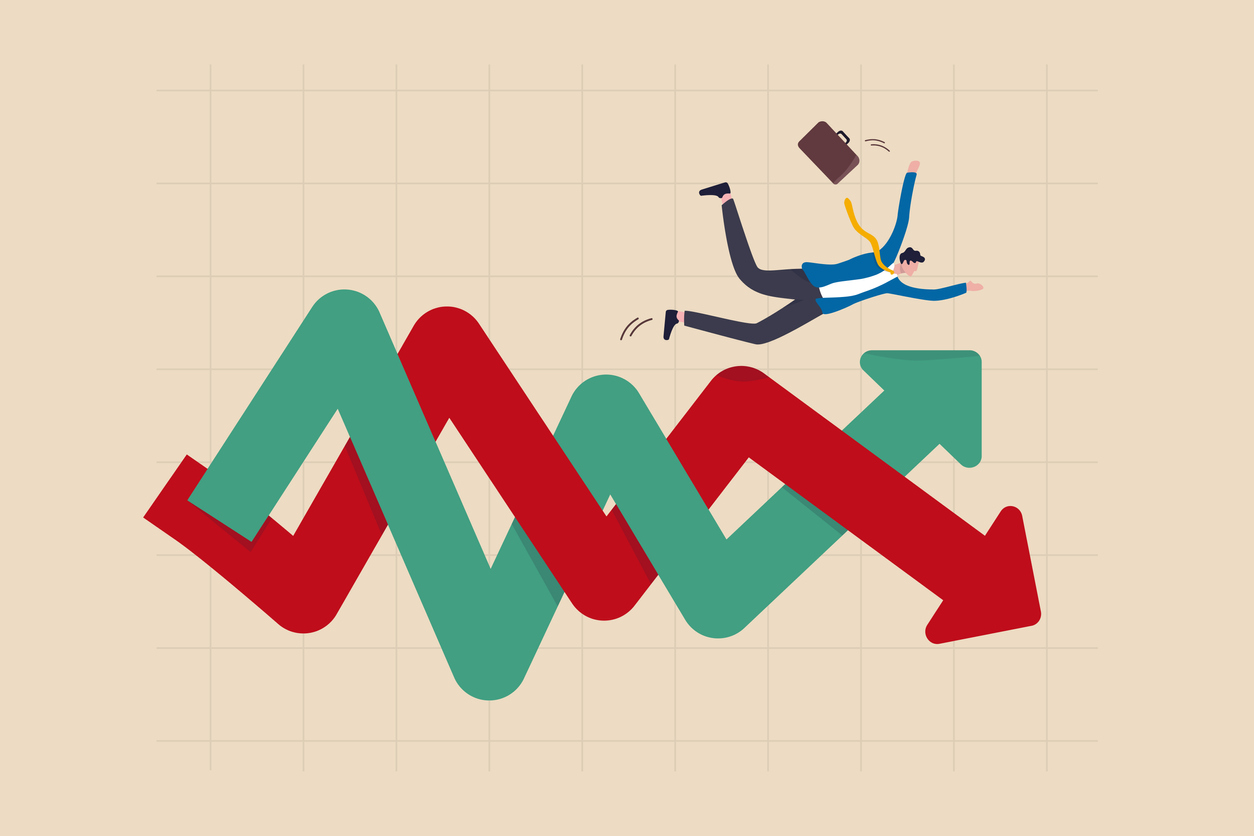It has been a tough few weeks watching the Russia-Ukraine conflict unfold. First and foremost, this is terrible for the Ukrainian people. I can’t even begin to comprehend the hardships to come. My thoughts are with them as they struggle to find the peace they knew only a short time ago.
The world is indeed small, and many of us have a direct or indirect connection to the turmoil. The human cost is much more important than stock prices or dividend payouts.
Despite this harsh reality, my know-how lies within the world of finance, and it’s best that I stay in my lane and leave the geopolitical solutions to the people better suited for that purpose. Even in difficult times, we need to objectively look at the markets to see what they mean for our own families. Once we feel safe and secure, we can always look for charitable avenues to help those in dire need.
It’s no surprise that military conflict leads to market uncertainty and volatility, which is exactly what we are seeing. Over the past few weeks, all the major stock indexes entered correction territory by falling over 10% at some point from recent highs. Last year was one of the smoothest years in recent history for the stock market, and while many expected 2022 to be more volatile because of traditional events such as the midterm elections and the probability of the Federal Reserve raising interest rates, few called for war as the exogenous event.
Typically, when an unpredictable authoritarian invades a sovereign nation, it creates new challenges, to say the least. There’s no timeline telling us how long the military conflict will last or how grave the consequences will be.
There are additional consequences of this conflict. While not primarily about oil and energy, there is a risk of supply disruptions for those resources. If you think people panic when Sony PlayStations aren’t available, imagine how they’d feel if they couldn’t put gas in their car. Oil pipelines from Russia supply a sizable portion of the fuel Europe uses. Conflicts lead to supply disruptions, a lack of supply leads to higher prices, and the rise in oil prices leads to even more inflation. This could force the Federal Reserve to raise interest rates even more, which could further hurt the market.
All of these issues are coming together and culminating into a cloud of economic anxiety. We need some sort of financial Zoloft, and we can find it in the form of historical context. It is helpful to explore market history to understand how markets and investor psychology reacted during similar times of hostility. When we look back through market history we can see that markets typically normalize through most events, even the most extreme ones. While past performance is not a guarantee of future results, it does provide us with a guide as we look at the weeks to come.
From the Russo-Japanese War of 1904 to World War I and World War II to the Korean War to the Cuban Missile Crisis to the Bosnian War to Sept. 11, we have more than a century of tragic events around the globe, and most incidents sent the markets into a nosedive — 24% corrections, 30% corrections, and on and on as I go down the list. On average, markets went down about 13%. But what’s more important is looking at where the markets were three months, six months, a year or three years afterward.
Here’s the good news. If you take all of these events and look at the Dow Jones Industrial Average three months after initiation, the markets are up almost 2% on average. At six months that rises to almost 5% on average. In most cases, after a year markets are up on average over 12%. Three years brings that to nearly 30%. In other words, on average the fear in markets is typically overstated relative to the actual market performance.
I’m here to remind you that corrections happen all the time — roughly every 1½ years. When they come, they’re not so pleasant. Even though we have no control over the next international twist or turn, we do have control over how we invest. If we invest in stable, dividend-paying stocks and have adequate levels of dry powder we can better navigate these periods of uncertainty. As a reminder, dry powder refers to safety assets within your portfolio (cash, U.S. treasuries and investment-grade bonds). That, combined with some perspective of time, has proven to get us through the temporary pullbacks.
The world is not ending. It’s the fear of uncertainty that casts a long shadow on the markets, which is completely understandable. However, we need to maintain a level head and stay financially disciplined. The worst thing we can do for our portfolios is panic.
Look at what we’ve recently overcome. The COVID pandemic completely shut down the global economy for a quarter of a year, but we’re still standing. In fact, the market is higher despite all of that uncertainty, dread and unrest. It’s our human emotion that makes the markets so volatile, even more so than the events that trigger that emotion.
Investors worry that every temporary bump is permanent. The most likely way to make them permanent is human error. If you’re down 20% or 30% and decide to jump ship, you are making it permanent when it doesn’t need to be. Through over two decades of my working with clients, I’ve found that the happiest retirees don’t check their portfolios every five minutes. They trust the long-term trends, even during times of strife.
Read the full AJC Article here
This is a formula that has proven to work throughout history despite wars, recessions and global pandemics. The next time you see a scary headline about what’s happening, remember that markets are resilient, and I hope you can be tooThis information is provided to you as a resource for informational purposes only and is not to be viewed as investment advice or recommendations. Investing involves risk, including the possible loss of principal. There is no guarantee offered that investment return, yield, or performance will be achieved. There will be periods of performance fluctuations, including periods of negative returns and periods where dividends will not be paid. Past performance is not indicative of future results when considering any investment vehicle. This information is being presented without consideration of the investment objectives, risk tolerance, or financial circumstances of any specific investor and might not be suitable for all investors. There are many aspects and criteria that must be examined and considered before investing. Investment decisions should not be made solely based on information contained in this article. This information is not intended to, and should not, form a primary basis for any investment decision that you may make. Always consult your own legal, tax, or investment advisor before making any investment/tax/estate/financial planning considerations or decisions. The information contained in the article is strictly an opinion and it is not known whether the strategies will be successful. The views and opinions expressed are for educational purposes only as of the date of production/writing and may change without notice at any time based on numerous factors, such as market or other conditions.









